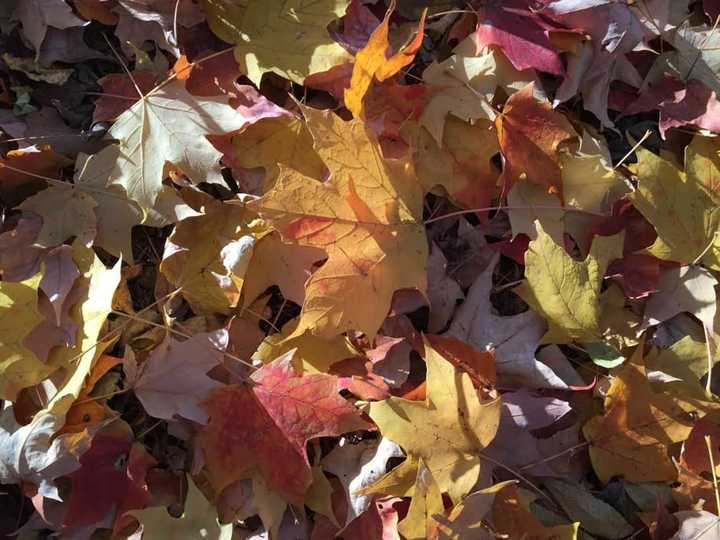Should we really treat fallen leaves like so much toxic waste? Let’s explore why we need to rethink our disdain for fallen leaves:
- Leaves are Mother Nature’s mulch and compost. In our region, and many other regions once dominated by forests, leaves are part of a natural nutrient cycling system. As leaves drop to the ground and decay, they protect and “feed” the soil, promoting better soil fertility and healthier plants.
- Decaying leaves help to retain moisture in the soil and capture rainwater so that it can infiltrate and supply tree roots – critical for healthy trees, which of course, have evolved with their own leaves falling at their base.
- Leaves help protect the soil from erosion, so important in the face of extreme weather events and flooding which we will see more frequently with climate change.
- Layers of leaves act to suppress weeds, just as purchased mulch does, but they are free! Save yourself some time and money and let leaves do the mulching for you.
- Leaves help maintain proper soil chemistry which dictates what plants can grow, and in turn, what creatures will be supported – critical to ecosystem balance and health.
- Leaf litter – those nice layers of decomposing leaves, serve as habitat, cover and foraging areas for many creatures. Numerous amphibians, reptiles, and even some birds and mammals use leaf litter in these ways.
- Many insects overwinter in leaf litter. Even some adult butterflies, like the Mourning Cloak, can overwinter in leaf litter. Insects are part of a food web and a source of protein for many creatures. The vast majority of terrestrial birds feed insects to their young. If you don’t have insects, you can’t support birds.
Think twice before you cart away those fallen leaves. Here are some ways to manage your leaves, even if you have an overabundance of them:
- Leave leaves alone in any wooded areas and around any trees or shrubs. Those leaves are doing their job and improving plant health.
- In plant beds, leave leaves in place as well. If the depth of leaves is truly overabundant, remove some leaves, pile them up, run them over with a mulching lawnmower, and put them back in the plant bed. The volume of leaves will be greatly diminished and the leaf bits will decompose more quickly.
- Not all plants have evolved with leaves, including our turf lawns. If you have a lawn full of leaves, you can use a mulching mower to run over the leaves in place. The tiny leaf pieces will decompose and add nutrients to your lawn. As an alternative you can collect the leaves on your lawn and use them in another part of your landscape.
Give fallen leaves the respect they deserve – they truly are your allies in the garden.
Kim Eierman, a resident of Bronxville, is an environmental horticulturist and Founder of EcoBeneficial. When she is not speaking, writing, or consulting about ecological landscapes, she teaches at the New York Botanical Garden, Brooklyn Botanic Garden, The Native Plant Center and Rutgers Home Gardeners School.
Click here to follow Daily Voice Mahopac and receive free news updates.
